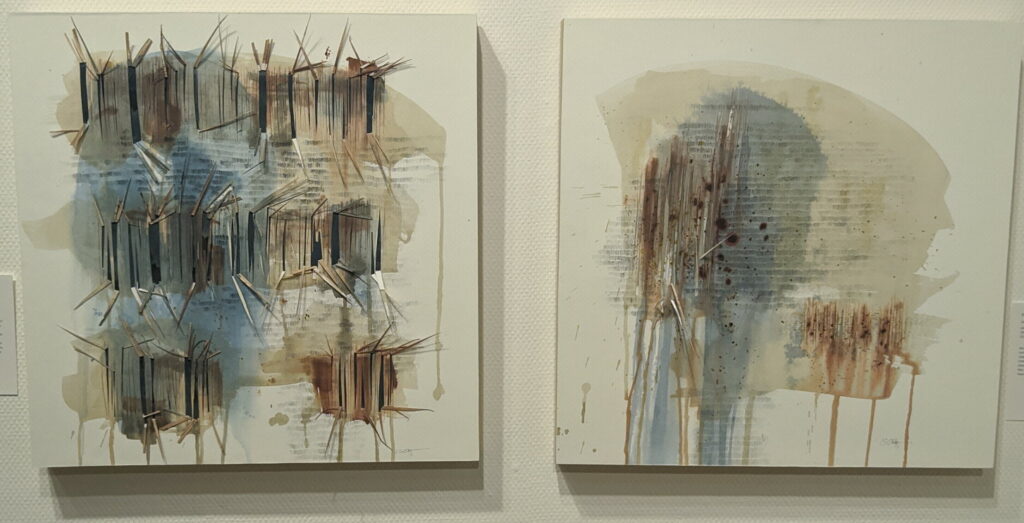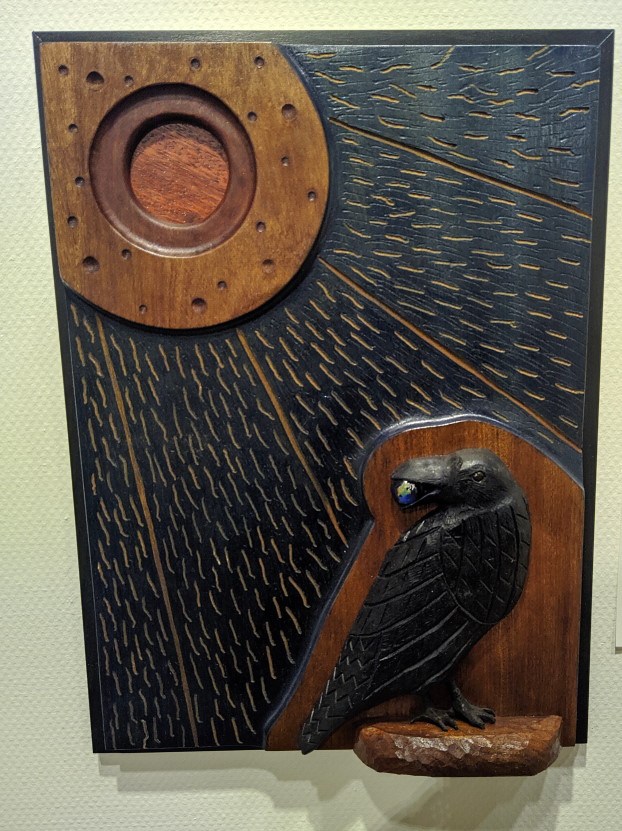
Massive and ancient earth beings presided over a recent exhibit at the Arts Center in Corvallis, as the human world of hope and fear collided with larger-than-human timescales. Entering into the exhibit hall, one felt the gnarled, venerable presence of Methuselah, boldly and angularly captured by painter Mary McDermott, the bristlecone pine that was seeded while the first dynasty of Egyptian Pharaohs reigned on the other side of the world. To the right, the gallery wall was dominated by the luminous field of Pando, also by McDermott, the 100 acre colony of quaking Aspen that is among the world’s oldest organisms. While these ancient sentinels looked on, their vastness in space and time framed the exhibit’s more immediate concerns. What will happen to nature on a changing planet? Will our children be OK? Who can help us help ourselves? How can we translate scientific knowledge into action? Where can we find hope?

What Will Nature Do? was conceived following a two part lecture series put on by The Arts Center earlier this year. In talks available for online streaming, scientists and artists discussed positive, hopeful aspects of scientific research and how these might be communicated through art. A consensus emerged that the doom-and-gloom perspective often used to frame environmental issues can obscure the nuance of actual scientific findings. While contributors acknowledge that the dangers are very real, they also brought forth examples of species adaptation, resilient dynamics of novel ecosystems, and the power to inspire change through art. Enthusiasm following this lecture series led to the installation in the Main Gallery of The Arts Center, on display from September 30th through November 13th with contributions by 25 mostly local artists. The invitation was to explore the hopeful dimensions of a changing world.

Hope was on display at The Arts Center, not the hope of superficial optimism or denial, but a deeply human hope, at times fragile and self-doubting, at times audacious as it finds its voice. Local artist Suzanne Getz’s striking sculpture What Now? has a female form sprawled on a pedestal in the middle of the hall, with the words “What happens now that we have lost so much?” inscribed on its back. Orchids sprout out of its dirty bare feet and the figure folds into a self-referential chasm at mid-shoulder that vaguely suggests a cowrie shell. Instead of a right arm, a bird peers over the edge. The work embodies the broken-yet-spontaneously-reorganizing nature of hope in world with an uncertain future.

A number of artists engaged themes related to communicating the insights of science to the public. In a series of three pieces, mixed media artist Lauren Ohlgren wrestles with the struggle of communicating the meaning of scientific data before it’s too late. Her intense slashing of paper that seems to bleed some kind of serum against rows and rows of charcoal tally marks will resonate with anyone who has been immersed in a scientific paper and experienced a moment of angst about whether anyone is actually paying attention. Jerri Bartholomew’s There Will Be Good Years and Bad Years confronts the problem head on, transforming graphs depicting variables about climate conditions and salmon health in the Klamath River into a stunning series of obsidian- and lichen-colored glass plates that tell a coherent story.

There Will Be Good Years and Bad Years, Jerri Bartholomew
On October 28th, The Arts Center convened a discussion panel to encourage reflection on the themes explored in the exhibit. Panelists included Oregon State philosophy professor Robert Figueroa, local artist Kate McGee, and wildlife biologist Bruce Marcot. The panelists explored the invitation toward optimism while acknowledging the difficult emotions that come with times of uncertainty. The evening was moderated by Julia Corbett, whose work at the intersection of environmental science and communication has emphasized stepping out of narratives based in fear and anxiety to communicate in more meaningful ways about climate change.

If there was one thing that united the variety of perspectives on display, it was a transformed view of the natural world. This was not a nature waiting for us to save it; it was a nature full of agency and subjecthood. In Raven Saves the People, Brian Egan pays homage to Native American mythology in a piece where “Raven moves the Earth away from the Sun to save us from global warming.” Neither a facile meditation on geoengineering nor a patronizing appropriation of native tradition, the piece invites us to reframe our view of nature. Like many of the works on display, it poses the question of what nature we see when we ask, “What will nature do?”—a passive object, a victim in need of saving, or an active and creative force that beckons for collaboration?
